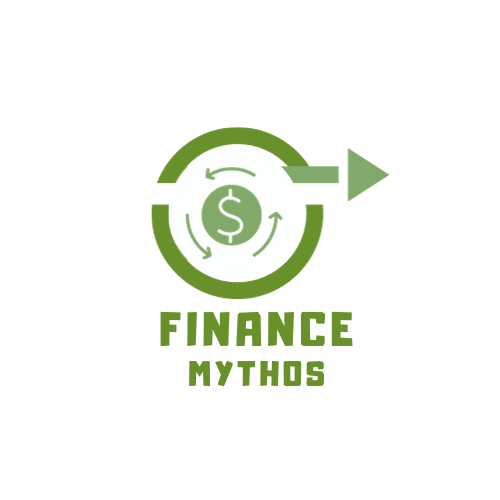The National Stock Exchange (NSE) has introduced new NSE algo trading rules that let everyday investors use automated trading systems, also known as algorithmic trading. Announced on May 5, 2025, via NSE Circular Ref. No: 471/2025, these rules aim to make retail trading automation accessible while keeping it safe. But terms like API, static IP, and TOPS can sound like tech jargon. Don’t worry! This article breaks down the NSE trading guidelines in simple language, so you can understand what safe algo trading means for you.
Table of Contents
ToggleWhat Is Algorithmic Trading?
Imagine a robot that follows your instructions to buy or sell stocks automatically. That’s what algorithmic trading for beginners is all about. Instead of clicking buttons yourself, you use a computer program (called an algorithm) to make trades based on rules you set, like “buy when a stock price drops to ₹100.” The NSE’s new rules make this technology available to regular investors, not just big players.
But with new tech comes new terms. Let’s decode the key ones: API, static IP, TOPS, and algo registration.
Breaking Down the Key Terms
1. API (Application Programming Interface)
Think of an API as a bridge that connects your trading app to the stock market. It lets your algorithm talk to your broker’s trading system to place orders. The NSE says brokers can give you API access, but you need to follow their safety rules, like using a specific internet address (more on that next).
2. Static IP
A static IP is like your home address for the internet. It’s a fixed number that identifies your computer when you connect to the broker’s system via an API. The NSE requires you to share this address with your broker to ensure only you (and not a hacker) are sending trade orders. You can change this address once a week if needed, like if you move to a new internet provider.
3. TOPS (Threshold Orders Per Second)
TOPS is a speed limit for your algorithm. It stands for Threshold Orders Per Second, which means how many buy or sell orders your algorithm can send in one second. The NSE sets this limit at 10 orders per second. If your algorithm is slower than this, you don’t need to register it with the exchange. If it’s faster, you’ll need to follow extra steps (see algo registration below).
4. Algo Registration
Algo registration is like getting a license for your algorithm. If your algorithm sends more than 10 orders per second, you must tell your broker about it. The broker then passes the details to the NSE, which gives your algorithm a unique ID number. This ID tags every trade your algorithm makes, so the NSE can track it and ensure it’s not causing trouble in the market.
How Do These Rules Keep Trading Safe?
The NSE algo trading rules are designed to make safe algo trading possible for non-techies. Here’s how they protect you:
Static IP for Security: By requiring a fixed internet address, the NSE ensures only authorized users access trading systems, reducing the risk of fraud.
TOPS Limits: The 10-orders-per-second cap prevents your algorithm from flooding the market with trades, which could cause chaos or losses.
Algo ID Tagging: Every trade is tracked with a unique ID, so the NSE can spot and stop any “rogue” algorithms that misbehave.
Broker Oversight: Brokers must check that algorithms follow rules, use secure systems (like two-factor authentication), and host algorithms on their own servers to prevent tampering.
Risk Management: Brokers have to set up safety nets, like limits on how much you can trade, to protect you from big losses.
These measures make retail trading automation less risky, but you still need to be cautious.
What Do These Rules Mean for You?
As a non-techie, the NSE trading guidelines open the door to algorithmic trading for beginners, but they also come with responsibilities. Here’s what you need to know:
Benefits for Retail Investors
Easier Access: You can use algorithms to trade faster and smarter, even if you’re not a tech expert.
Safety First: The NSE’s rules reduce risks like hacking or market manipulation, making safe algo trading possible.
Flexibility: You can start with simple, low-speed algorithms (under 10 orders per second) without complex registration.
Things to Watch Out For
Learning Curve: Terms like API and static IP might feel overwhelming at first. Ask your broker for help or use beginner-friendly platforms.
Costs: Brokers may charge extra for API access or algo registration, so check the fees before starting.
Risks: Even with safety rules, a poorly set-up algorithm could lose money. Test your algorithm in a demo account first.
How to Get Started with Algo Trading
Ready to try retail trading automation? Here’s a simple plan:
Find a Trusted Broker: Choose a broker that follows NSE algo trading rules and offers easy-to-use API services.
Learn the Basics: Understand how APIs and algorithms work. Many brokers offer tutorials for algorithmic trading for beginners.
Set Up Your Static IP: Work with your internet provider to get a static IP address, then share it with your broker.
Start Small: Use a low-speed algorithm (under 10 orders per second) to avoid registration hassles.
Test and Monitor: Run your algorithm in a practice account and keep an eye on its performance.
The NSE’s new NSE algo trading rules make safe algo trading a reality for everyday investors. By simplifying terms like API, static IP, TOPS, and algo registration, we hope you feel more confident about retail trading automation. While the rules protect you from major risks, success depends on choosing a reliable broker, starting small, and learning as you go. Ready to trade like a pro? Dive into algorithmic trading for beginners with the NSE’s guidelines as your guide!
Frequently Asked Questions About NSE Algo Trading Rules
What are NSE algo trading rules?
The NSE algo trading rules allow retail investors to use automated trading systems with safety measures like static IPs and TOPS limits.What is an API in algo trading?
An API is a tool that connects your trading algorithm to your broker’s system, letting you place trades automatically.What is a static IP, and why do I need it?
A static IP is a fixed internet address that ensures only you access your broker’s trading system, making safe algo trading possible.What does TOPS mean in algo trading?
TOPS (Threshold Orders Per Second) is a limit of 10 orders per second. Algorithms below this don’t need registration.Do I need to register my trading algorithm?
Only if it sends more than 10 orders per second. Otherwise, you can use it without registering, per NSE trading guidelines.Is algo trading safe for non-techies?
Yes, with NSE algo trading rules ensuring security. Start with a trusted broker and simple algorithms for safe algo trading.How do I start algorithmic trading as a beginner?
Choose a broker, set up a static IP, and try a low-speed algorithm. Learn with tutorials on algorithmic trading for beginners.What are the risks of retail trading automation?
Risks include setup costs, technical errors, and potential losses. Test algorithms in demo mode to minimize risks.Can algo trading cause market problems?
The NSE prevents this by limiting orders to 10 per second and allowing exchanges to stop rogue algorithms.How much does algo trading cost?
Costs vary by broker, including API fees and possible algo registration charges. Check with your broker for details.

Jugaad on Two Wheels: The Hilarious Bike Parcel Hack in Karnataka
The Great Karnataka Bike Parcel Hack: A Jugaad Masterclass #RapidoParcel: In a creative yet controversial move, ride-hailing platform Rapido has found a way around Karnataka’s

Denmark’s Digital Sovereignty Revolution: Linux and LibreOffice Lead the Way
Introduction to Denmark’s Bold Move In June 2025, Denmark’s Ministry of Digital Affairs made headlines by embracing digital sovereignty, ditching Microsoft Windows and Office 365

🏏Sports as a Business Strategy: Insights from Vijay Mallya’s RCB Ownership
🧠 Sports as a Business Strategy (Tool) In modern business, few platforms offer better engagement and emotional connection than sports. From football clubs in Europe

🙏 Apologies in Leadership: Vijay Mallya Public Apology
🧠 Introduction: The Role of Apologies in Leadership In the corporate world, apologies aren’t signs of weakness—they’re strategic acts of leadership. When made with sincerity

Audiobook Production Costs: Navigating Recording Artists, Studio Expenses, and AI’s Impact
The audiobook industry is booming, with over 130 million listeners in the U.S. alone in 2021 and a growing global appetite for audio content. Producing

Media Trial of Vijay Mallya: How Public Perception Shaped Vijay Mallya’s Legacy
Introduction: Media’s Influence on Business Narratives In today’s hyper-connected world, media narratives can make or break a business reputation. For Vijay Mallya, once known as

